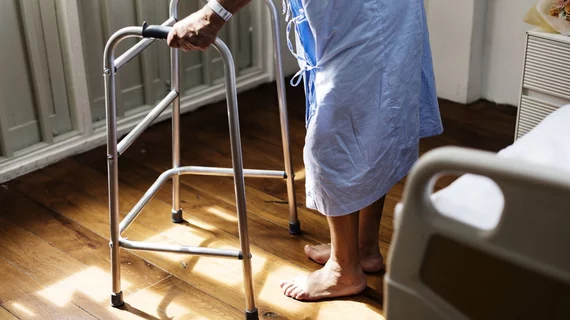Falls, infections much more likely among Medicare patients treated at private equity-owned hospitals
Private equity firms and private equity-backed physician groups have grown increasingly influential in the world of healthcare in recent years. The trend has carried over into several specialties, including cardiology, leading to more and more speculation about the impact such investments may make on patient outcomes.
The importance of tracking hospital-acquired adverse events
A trio of researchers representing Harvard Medical School and the University of Chicago aimed to learn more about this ongoing development, tracking the rates of certain hospital-acquired adverse events among Medicare patients treated at U.S. hospitals.
The group shared its findings in JAMA, noting that monitoring what happens during a hospitalization “may provide a better assessment of quality attributable to private equity” than other approaches.
“Hospital-acquired conditions are established measures of inpatient quality, are considered preventable based on guidelines from the U.S. Centers for Medicare & Medicaid Services (CMS), are clinically important for patients and have been financially relevant for both hospitals and the CMS since 2009,” wrote first author Sneha Kannan, MD, with the department of healthcare policy at Harvard Medical School, and colleagues.
Kannan et al. focused on Medicare Part A data from more than 660,000 hospitalizations at 51 private equity-acquired hospitals and more than 4 million hospitalizations at 259 matched control hospitals. All hospitalizations occurred from 2009 to 2019. Patients were hospitalized for a variety of reasons. Heart failure was one of the four most common indications, as were sepsis, total hip arthroplasty and chronic obstructive pulmonary disease/pneumonia. The mean patient age was 73 years old, and 55% were women.
The analysis included a wide range of hospital-acquired adverse events, including foreign objects retained after a surgery, falls, surgical site infections and cases of deep vein thrombosis or pulmonary embolism after a knee or hip replacement.
The team’s findings of adverse events at private equity hospitals
Overall, the group found that these events were reported in a total of 10,091 hospitalizations. Private equity hospitals were associated with an increase in hospital-acquired adverse events of 25.4%. This significant difference was driven by a 27.3% increase in the number of patient falls, a 38% increase in the number of central line-associated infections and a surgical site infection rate that doubled.
Meanwhile, in-hospital mortality was slightly less common at private equity hospitals. Thirty days after hospital discharge, there was no difference in mortality between the two hospital types. The authors wrote that this may be because private equity hospitals treated a younger, lower-risk group of Medicare patients than the control hospitals not backed by private equity.
“Hospital-acquired adverse events have been shown to be sensitive to staffing ratios and composition, specifically among nurses,” the authors wrote. “Given that private equity firms have reduced staffing and changed the clinician labor mix at acquired hospitals and clinics, an analogous cost-cutting strategy in our sample may help explain the increase in hospital-acquired conditions. These adverse events themselves can raise the risk of mortality, which highlights the clinical importance of this evidence.”
Another key takeaway from this analysis was that lengths of stay were 3.4% shorter at private equity hospitals. The combination of more hospital-acquired events and shorter lengths of stay may seem unusual at first, but the study group has a theory. This could be because private equity hospitals are more likely to transfer patients to other facilities or participate in other examples of “revenue-enhancing behavior.”
“These findings heighten concerns about the implications of private equity on health care delivery,” the group concluded.
Click here to read the full study.

